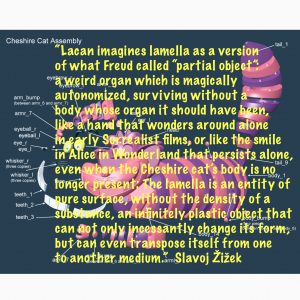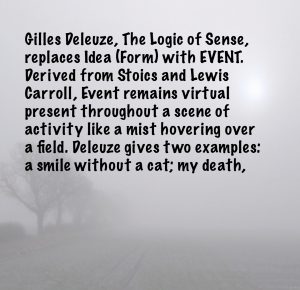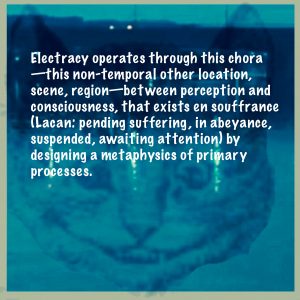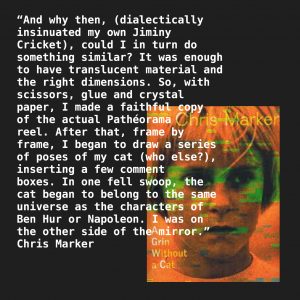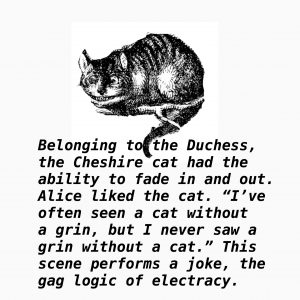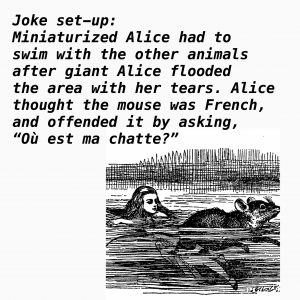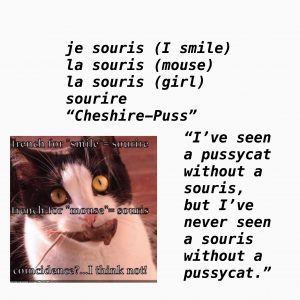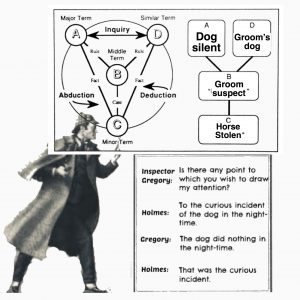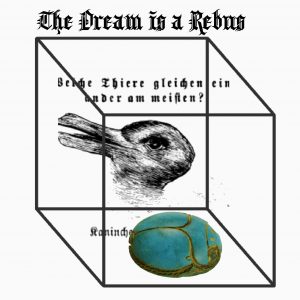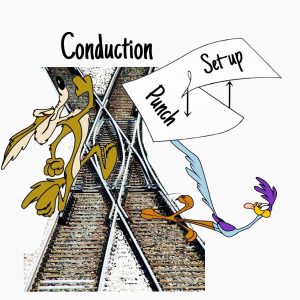The Neutral
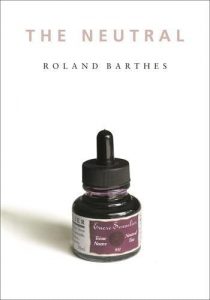 The Cheshire Diagrams are conductive, initiating a certain trajectory, a direction/sense (sens) of inference through information: smile as design prompt, the grin without a (Cheshire) cat, to a suspension of position, being en sourffance (pending), to hovering relative to event. Such is the egent’s orientation to disaster: not to take a stand, formulate a thesis (position), as would be expected in our Contrast, a literate inquiry. Konsult necessarily orients otherwise. The hovering smile leads us to one of the most extensive theoretical explorations of this a-thetic orientation, exemplified in the entire career of Roland Barthes, from the Zero Degree of Writing, to The Neutral (and the final seminar, Preparation of the Novel). In his penultimate seminar taught at the Collège de France, Roland Barthes defined the “neutral” as that which baffles the paradigm. We will have more to say and do (to theopraxese) with the neutral. For now, by way of conductive transition, there is this citation of the seminar’s concluding statement.
The Cheshire Diagrams are conductive, initiating a certain trajectory, a direction/sense (sens) of inference through information: smile as design prompt, the grin without a (Cheshire) cat, to a suspension of position, being en sourffance (pending), to hovering relative to event. Such is the egent’s orientation to disaster: not to take a stand, formulate a thesis (position), as would be expected in our Contrast, a literate inquiry. Konsult necessarily orients otherwise. The hovering smile leads us to one of the most extensive theoretical explorations of this a-thetic orientation, exemplified in the entire career of Roland Barthes, from the Zero Degree of Writing, to The Neutral (and the final seminar, Preparation of the Novel). In his penultimate seminar taught at the Collège de France, Roland Barthes defined the “neutral” as that which baffles the paradigm. We will have more to say and do (to theopraxese) with the neutral. For now, by way of conductive transition, there is this citation of the seminar’s concluding statement.

4. From that (I will stop here), going back to Freud and Leonardo, we might perhaps say that the Neutral finds its feature, its gesture, its inflection embodied in what is inimitable about it: the smile, the Leonardian smile analyzed by Freud: Mona Lisa, St. Anne, Leda, St. John, Bacchus: smiles at the same time of men and women: smiles-figures in which the mark of exclusion, of separation cancels itself, smiles that circulate from one sex to the other: “the smile of bliss and rapture which had once played on his mother’s (Caterina’s) lips as she fondled him.” Even if the biographical reference seems to me too specific, too anecdotal, there is this truth: the idea that the genital paradigm is baffled (transcended, displaced) not in a figure of indifference of unfeeling, or matteness but in that of ecstasy, of enigma, of gentle radiance, of the sovereign good. To the gesture of the paradigm, of the conflict, of the arrogant demeaning, represented by the castrating laugh, the gesture of the Neutral would reply: smile.
Exit the Neutral.
Roland Barthes, The Neutral, Trans. Rosalind E. Krauss and Denis Hollier, Columbia University Press 2005.


